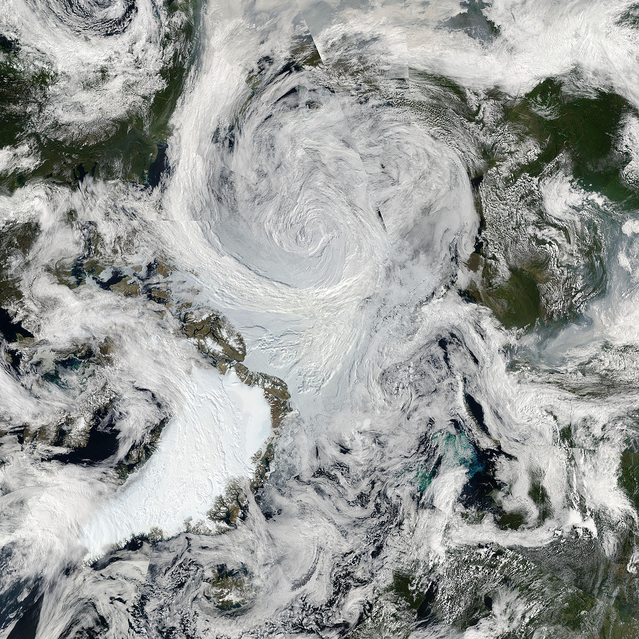An Arctic CSI case: Cyclone is absolved in record sea ice melt
By Becky Oskin, OurAmazingPlanet
1 February 2013 The scene of the crime: The Arctic. The suspect: The Great Arctic Cyclone of August 2012. The victim: The Arctic sea ice, which melted to a record low area last year. “The Great Arctic Cyclone of August 2012″ arose in Siberia on 2 August 2012 and crossed the Arctic Ocean to Canada, lasting an unusually long 13 days. The cyclone hit a pressure minimum of 966 millibars on Aug. 6, the lowest ever recorded for an Arctic storm. The stronger the pressure gradient, or difference in pressure, the stronger the winds associated with a storm. Since the storm, which was equal in strength to a hurricane, tore across the Arctic, scientists have wondered whether its winds and waves were a guilty party in the disappearing Arctic sea ice. To solve the mystery, climate scientists from the University of Washington performed the equivalent of a forensic exam: They ran a computer simulation of last summer’s weather and compared it against a second scenario that was identical, except that there was no cyclone. “The storm was enormous,” study co-author Axel Schweiger, a polar scientist in the university’s Applied Physics Laboratory, said in a statement. “The impact on the ice was immediately obvious, but the question was whether the ice that went away during the storm would have melted anyway because it was thin to begin with.” Though the storm had a huge impact on sea ice while it passed, within two weeks, the effect diminished, lead author Jinlun Zhang, also a scientist in the university’s Applied Physics Laboratory, said in the statement. The final verdict? Not guilty. The scientists conclude the cyclone reduced the final September ice extent by almost 60,000 square miles (150,000 square kilometers), an additional 5 percent. However, they point out that 2012’s record loss was 18 percent greater than the previous low, set in 2007. [Video: Powerful Arctic Cyclone Wreaks Havoc on Sea Ice ] “Thus without the storm, 2012 would still have produced a record minimum,” the authors report in their study, which appears online this week in the journal Geophysical Research Letters. [more]
An Arctic CSI case: Cyclone is absolved in record sea ice melt
